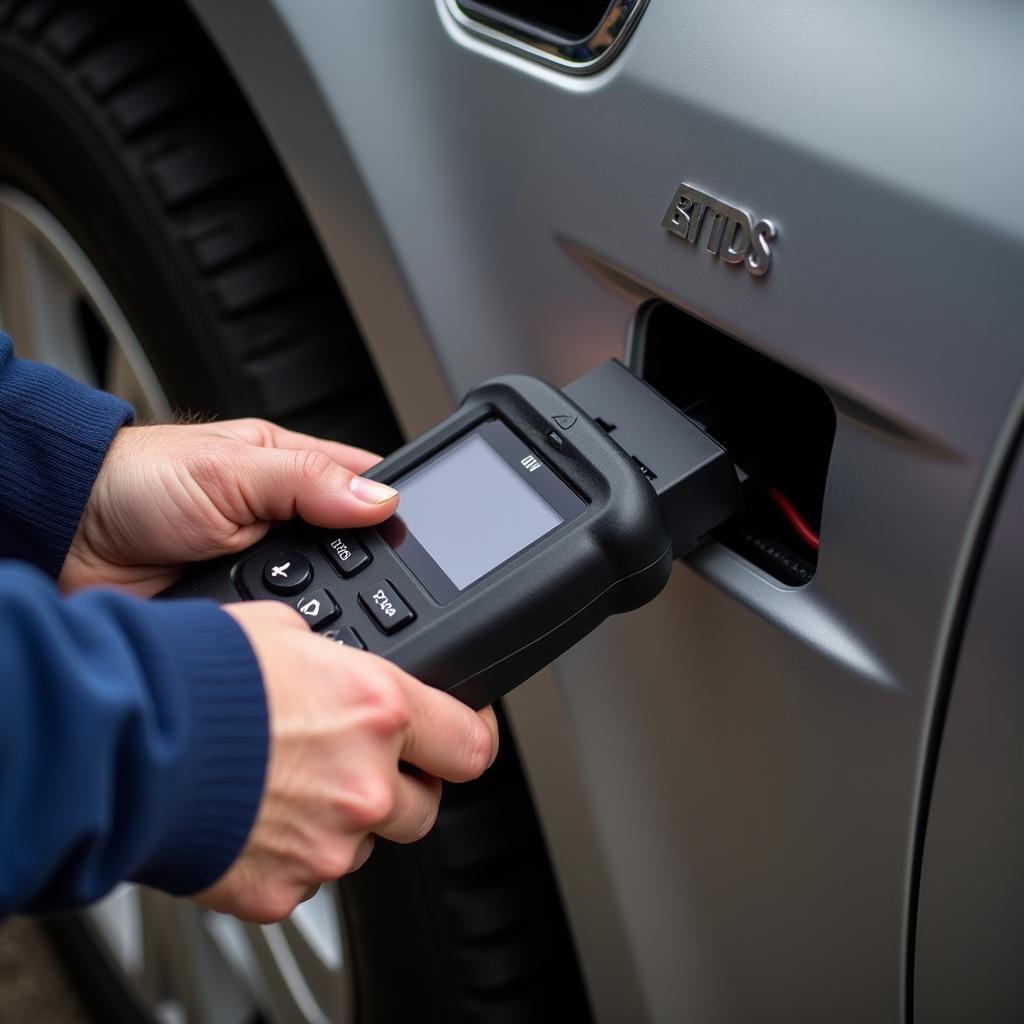Choosing the best car diagnostic reader can feel overwhelming with countless options available. Whether you’re a seasoned mechanic or a car enthusiast looking to troubleshoot your vehicle, this comprehensive guide will equip you with the knowledge to make an informed decision.
Understanding Car Diagnostic Readers
Before we delve into the specifics, let’s clarify what a car diagnostic reader does. In essence, it acts as a bridge between your car’s computer and you. By plugging into the OBD-II port (usually located under the dashboard), these readers can retrieve diagnostic trouble codes (DTCs) stored in your vehicle’s Engine Control Unit (ECU).
These codes, presented as a combination of letters and numbers, indicate potential issues with your car’s engine, transmission, emissions system, and more.
Why You Need a Car Diagnostic Reader
Having a car diagnostic reader offers a plethora of benefits, including:
- Early Problem Detection: Identify minor issues before they escalate into major repairs, saving you time and money.
- Informed Repair Decisions: Understand the root cause of your car problems and avoid unnecessary or incorrect repairs.
- Enhanced Control Over Maintenance: Monitor your car’s health, track maintenance schedules, and reset service lights.
- Cost Savings: Diagnose problems yourself and potentially avoid expensive mechanic visits for simple fixes.
- Increased Resale Value: Maintaining a detailed vehicle history using a diagnostic reader can increase your car’s resale value.
Types of Car Diagnostic Readers
Car diagnostic readers come in various forms, each catering to different needs and budgets:
1. Basic Code Readers
These entry-level readers are ideal for beginners. They can read and clear basic DTCs, offering a cost-effective solution for simple diagnostics.
2. Advanced Code Readers (OBD2 Scanners)
Offering more features than basic readers, OBD2 scanners can access a wider range of data, including live sensor readings, freeze frame data, and emissions readiness status.
 Mechanic Using OBD2 Scanner on Car
Mechanic Using OBD2 Scanner on Car
3. Professional-Grade Scan Tools
Used by experienced mechanics and workshops, these high-end tools offer comprehensive diagnostics, advanced programming capabilities, and access to manufacturer-specific data.
Key Features to Consider
When choosing a car diagnostic reader, consider the following factors:
- Vehicle Compatibility: Ensure the reader supports your car’s make, model, and year.
- Code Reading and Clearing: Look for readers that can both read and clear DTCs.
- Live Data Streaming: Access real-time sensor data for in-depth diagnostics.
- Additional Features: Consider features like ABS, airbag, and transmission diagnostics, depending on your needs.
- User Interface: Opt for a reader with an intuitive interface and easy-to-understand menus.
- Connectivity: Choose readers with Bluetooth or Wi-Fi capabilities for convenient data transfer.
- Software Updates: Ensure the manufacturer provides regular software updates to maintain compatibility with new vehicle models.
Choosing the Right Reader for You
The best car diagnostic reader depends on your individual needs and technical expertise:
- For DIY Enthusiasts: A basic code reader or an OBD2 scanner with live data streaming would be sufficient for routine maintenance and troubleshooting. For those on a budget, you might want to check out the best budget car diagnostic tool.
- For Experienced Mechanics: Professional-grade scan tools offer the comprehensive functionality required for advanced diagnostics and repairs. For individuals working with both cars and trucks, a versatile tool like the one reviewed in our article on the best diagnostic tool for cars and trucks could be beneficial.
- For Fleet Managers: Opt for a professional-grade tool or a fleet management system with integrated diagnostics for monitoring multiple vehicles.
“Investing in the right car diagnostic reader is akin to having a personal mechanic at your fingertips. It empowers you with knowledge, saves you money, and provides peace of mind on the road,” says John Smith, Senior Automotive Engineer at XYZ Automotives.
Conclusion
Choosing the best car diagnostic reader requires careful consideration of your needs, budget, and technical expertise. By understanding the different types of readers, key features, and target user groups, you can confidently select a tool that empowers you to take control of your car’s health and maintenance.

Leave a Reply